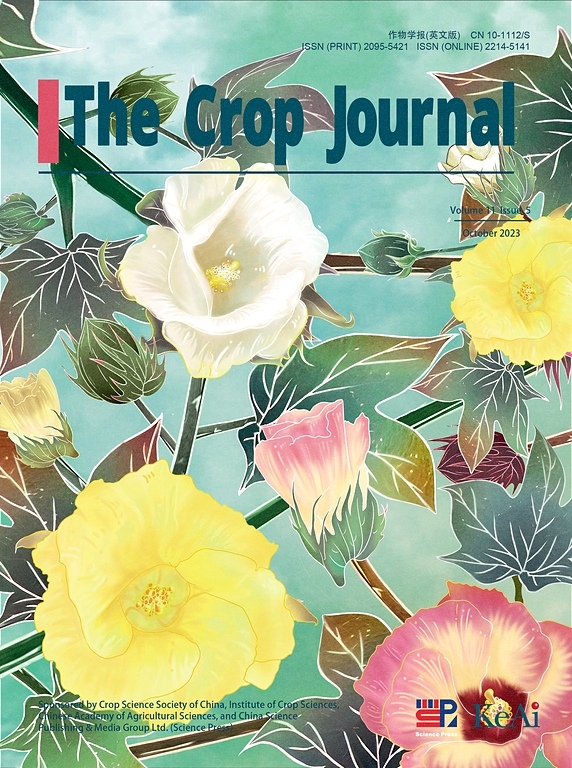Introgression of sharp eyespot resistance from Dasypyrum villosum chromosome 2VL into bread wheat
Abstract
Wheat sharp eyespot, a stem disease caused by the soilborne fungus Rhizoctonia cerealis van der Hoeven, has become a threat to wheat production worldwide. Exploiting resistance resources from wild relatives of wheat is a promising strategy for controlling this disease. In this study, a new wheat–Dasypyrum villosum T2DS·2V#4L translocation line in the background of Chinese Spring (CS) showed stable resistance to R. cerealis. Introgression of the T2DS·2V#4L chromosome into wheat cultivar Aikang 58 by backcrossing produced a marked increase in sharp eyespot resistance in NIL-T2DS·2V#4L in comparison with NIL-T2DS·2DL, and no detrimental effects of 2V#4L on agronomic traits were observed in the BC2F2, BC2F2:3, and BC2F2:4 generations. Flow-sorted sequencing of 2V#4L yielded 384.3 Mb of assembled sequence, and 8836 genes were predicted of which 6154 had orthologs in at least one of the 2AL, 2BL, and 2DL arms of CS, whereas 1549 genes were unique to 2V#4L. About 100,000 SNPs were detected in genes of 2V#4L and 2DL in 10 sequenced bread wheat cultivars. A Kompetitive Allele Specific Polymerase chain reaction and 30 conserved ortholog sequence markers were developed to trace the 2V#4L chromatin in wheat backgrounds. T2DS·2V#4L compensating translocation lines represent novel germplasm with sharp eyespot resistance and the markers will allow rapid detection in breeding programs.

 求助内容:
求助内容: 应助结果提醒方式:
应助结果提醒方式:


